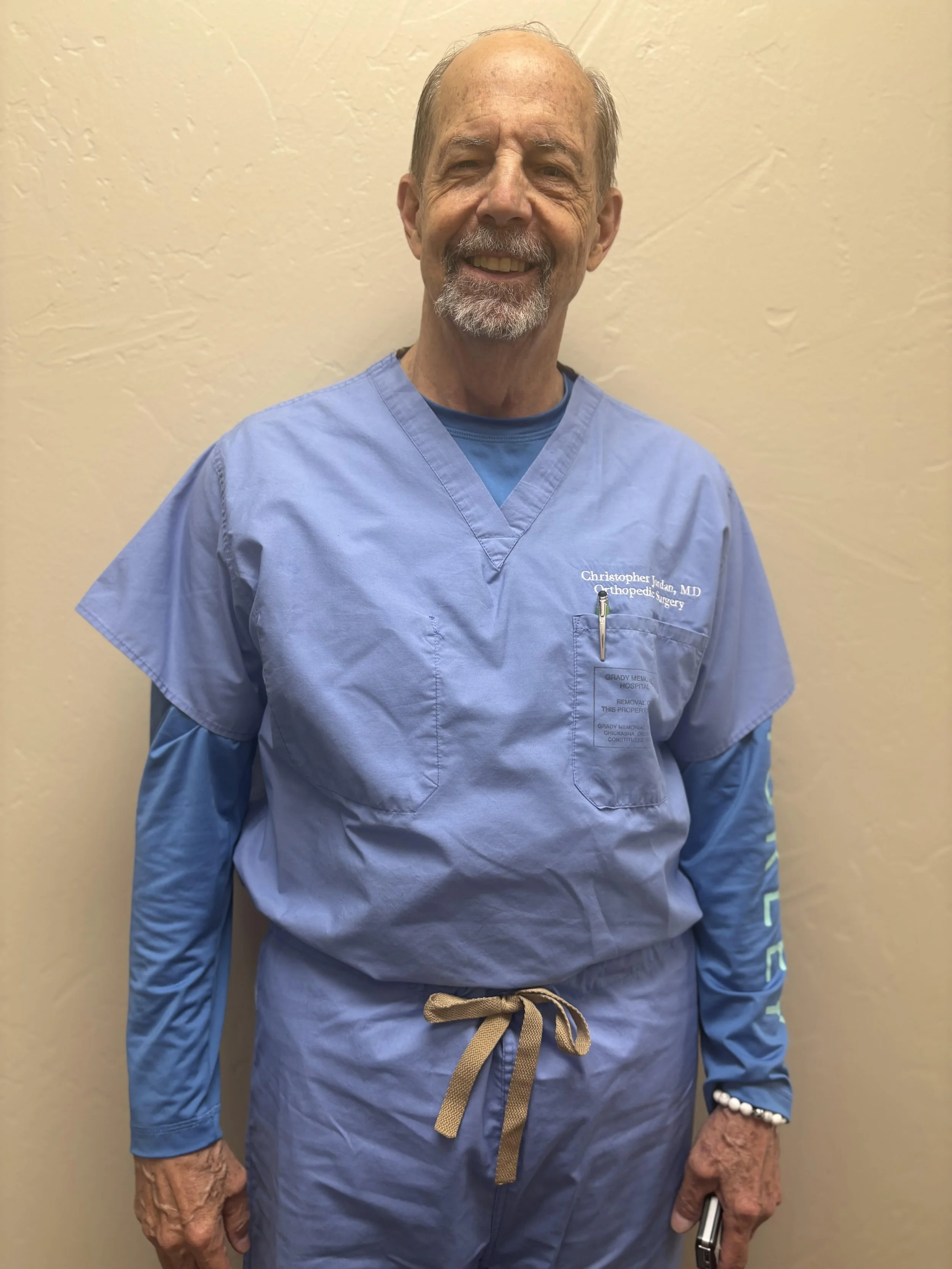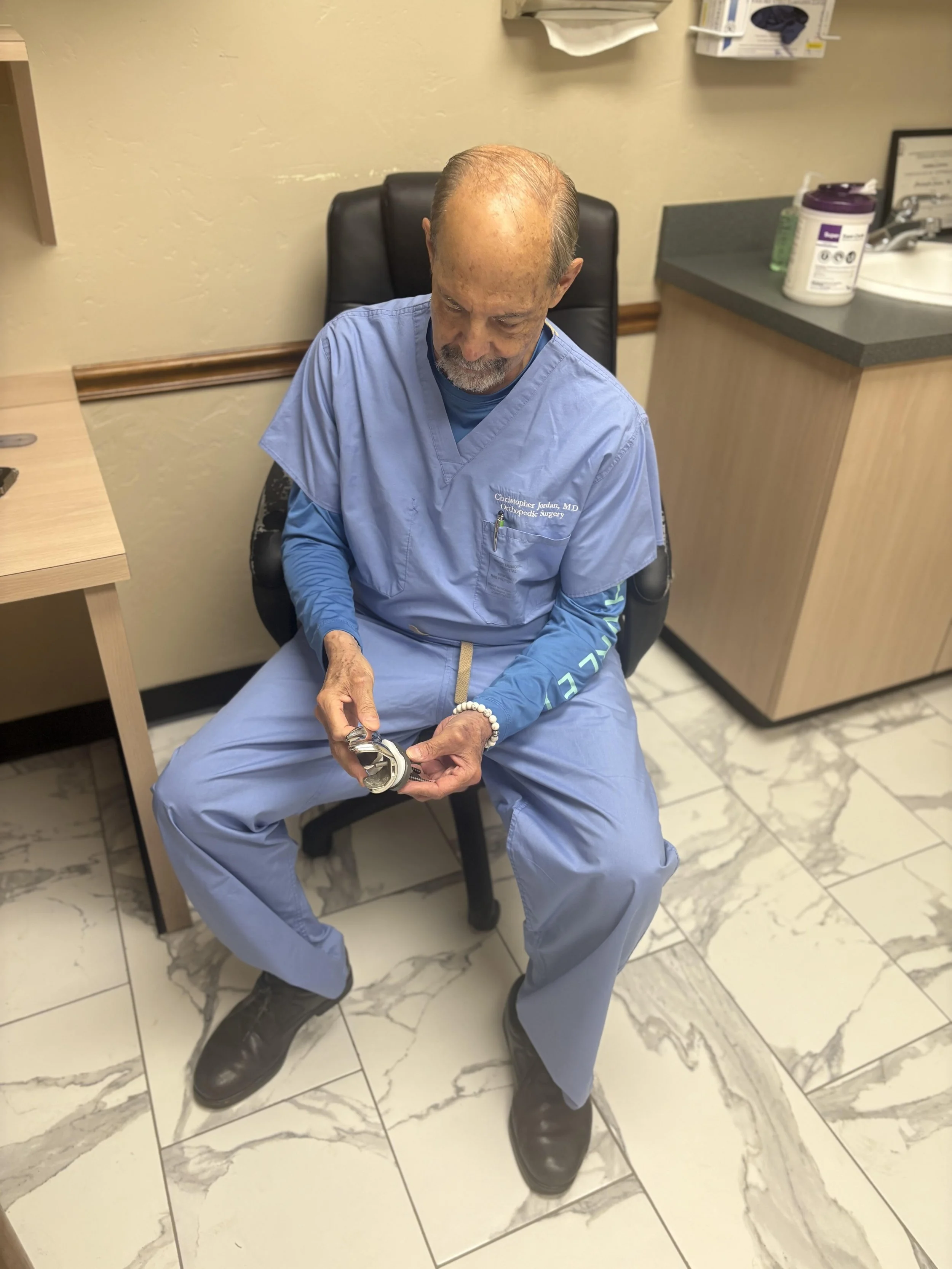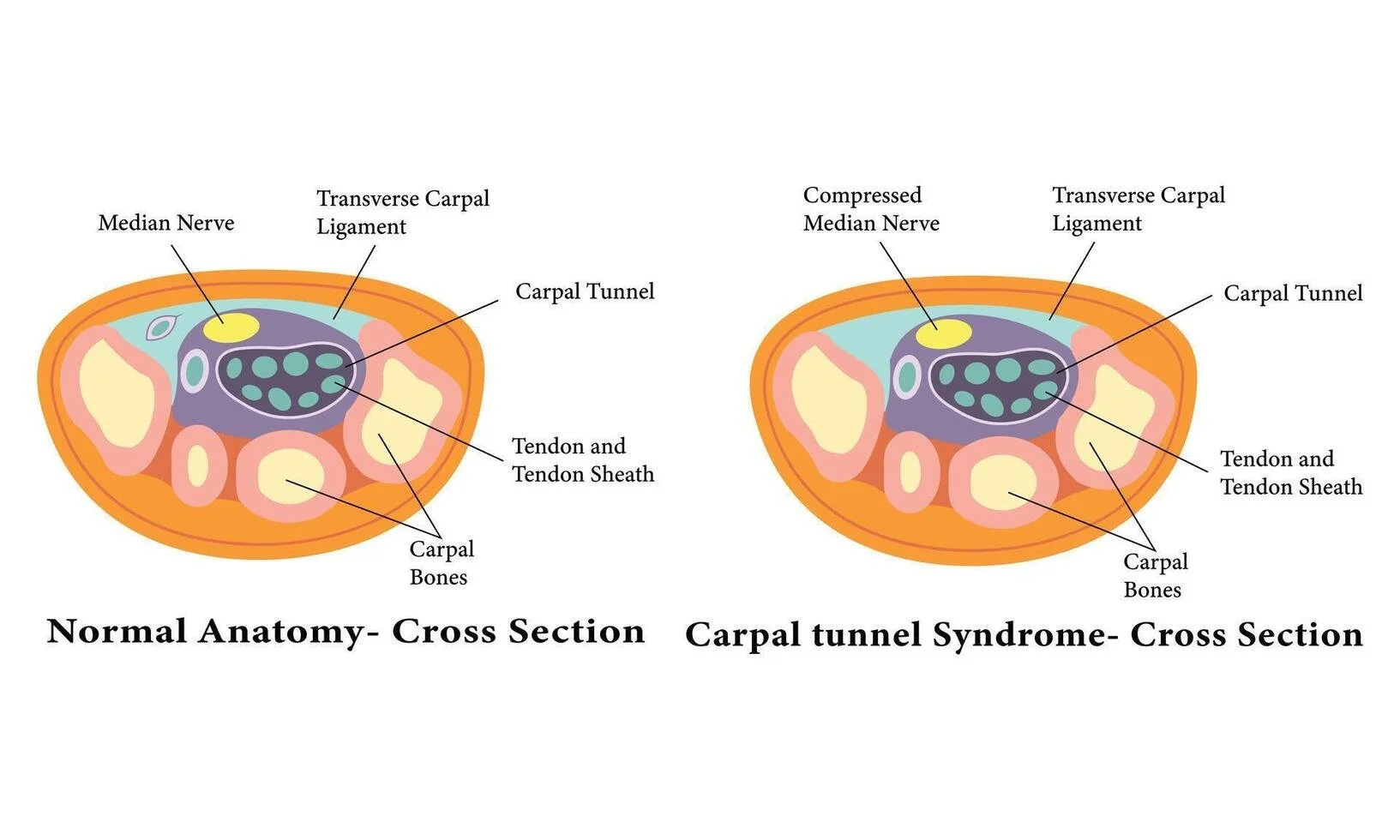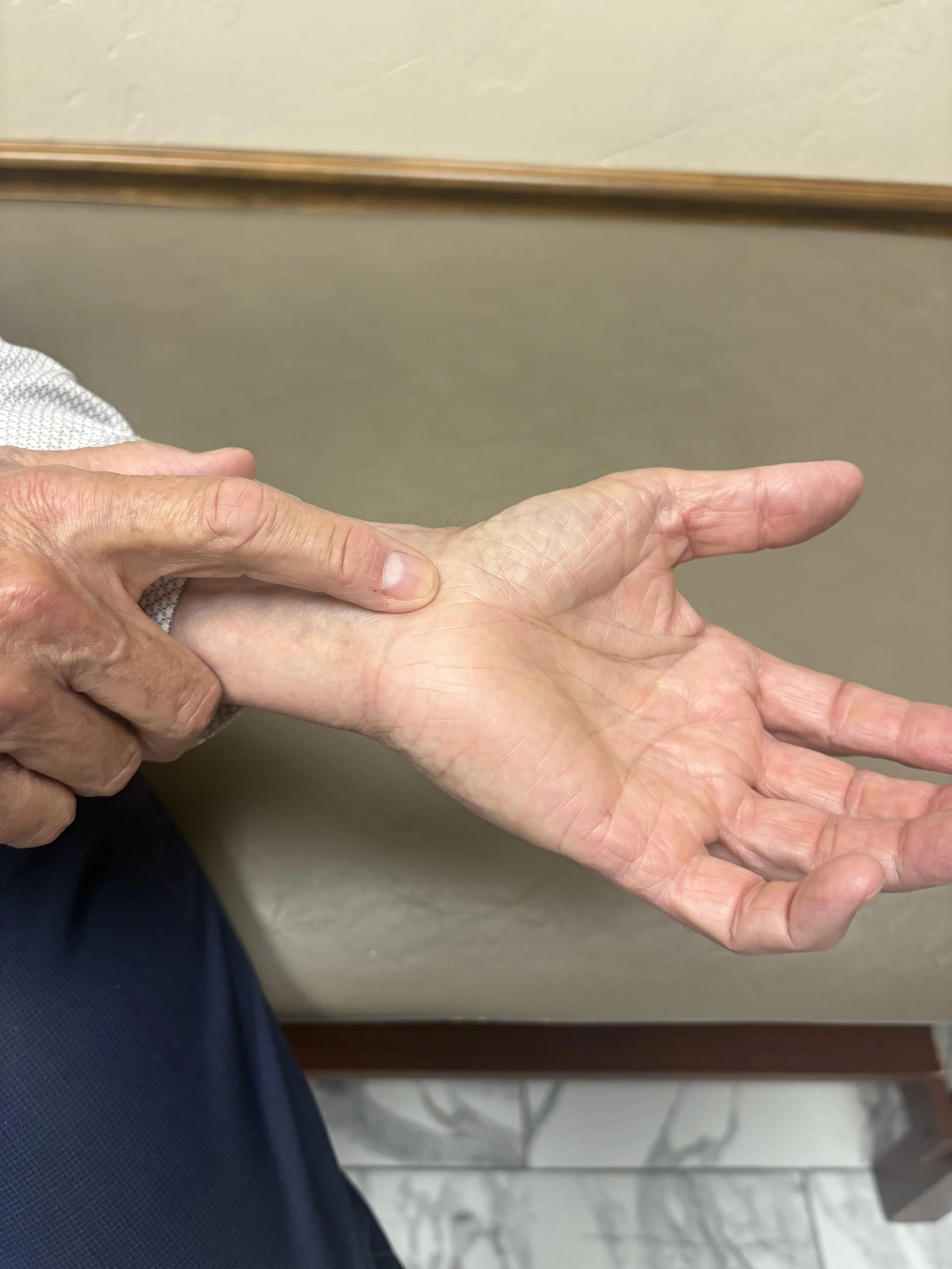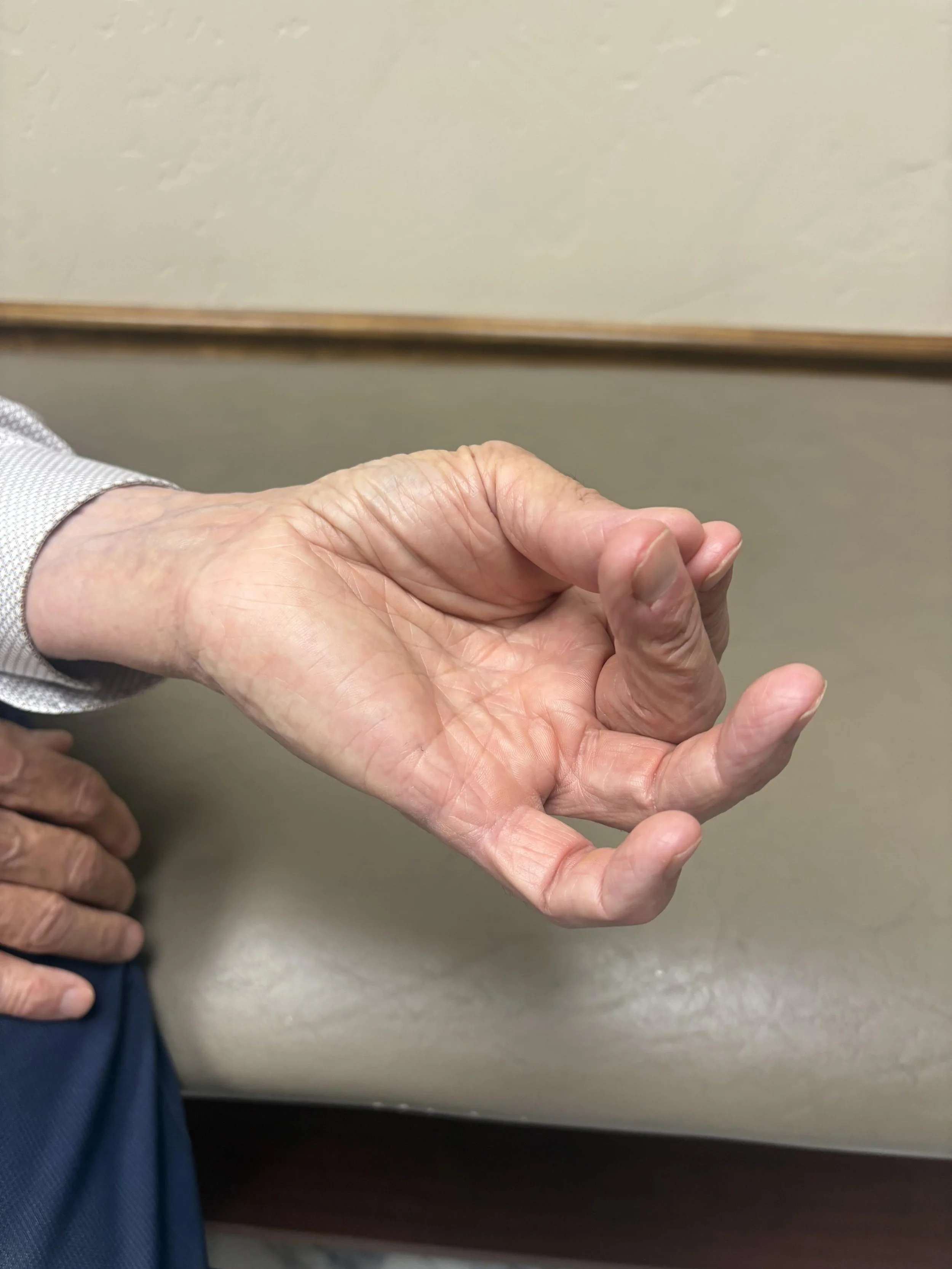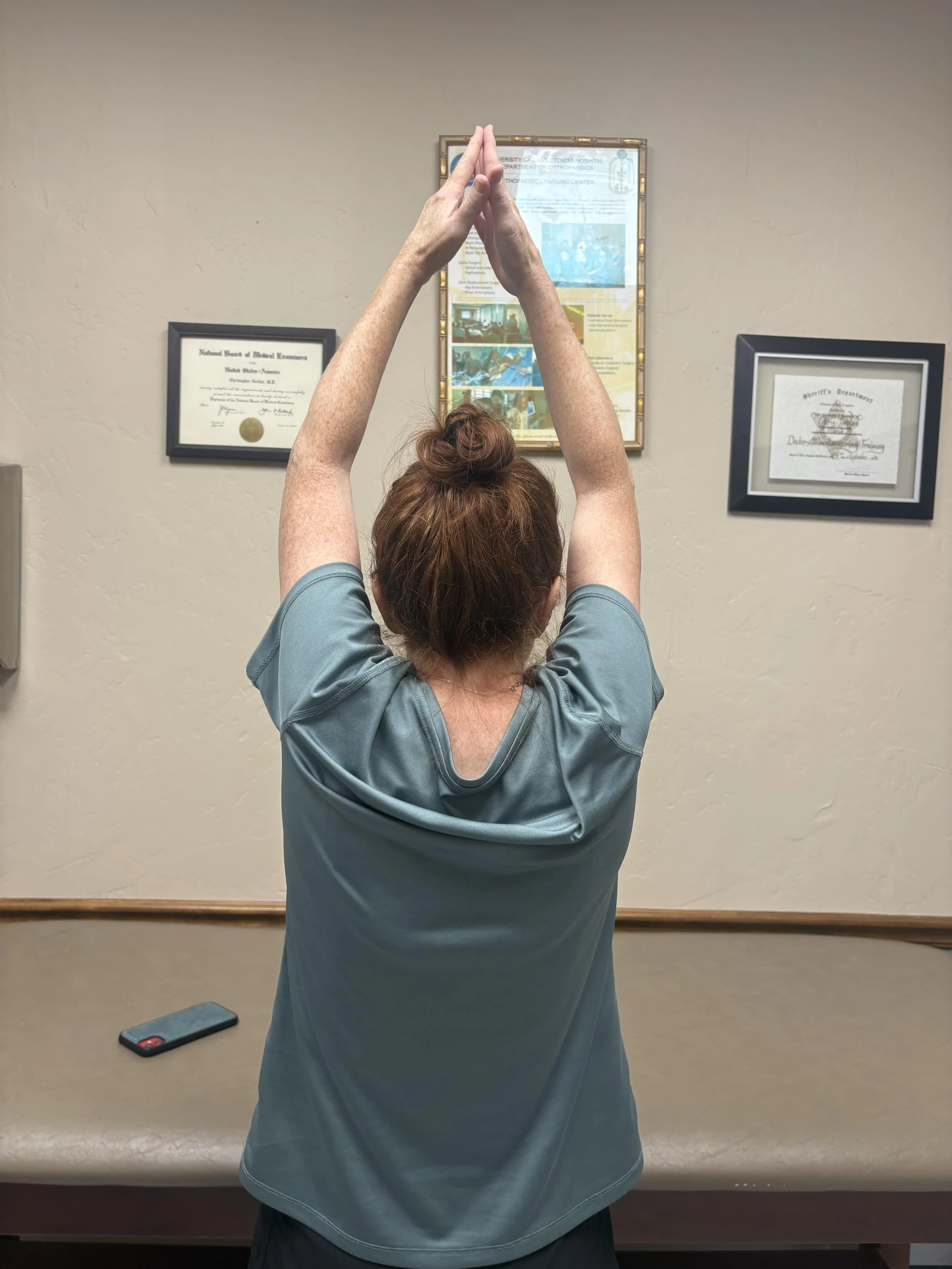
Christopher Jordan, M.D.
Medical Education: Loyola University Chicago Stritch School of Medicine, M.D., June 1973
Board Certification: American Board of Orthopaedic Surgery
Education & Training
Internship: Rotating Internship, St. Francis Hospital (Evanston, IL), July 1973 – June 1974
Residency: Orthopedic Surgery, Northwestern University, Chicago, IL, July 1974 – June 1978
Fellowship: Adult Neuromuscular Diseases, Rancho Los Amigos National Rehabilitation Center (Downey, CA), July 1978 – June 1979
Academic & Professional Appointments
Chief of Stroke Services, Rancho Los Amigos National Rehabilitation Center, 1981 – 1999
Assisstant Clinical Professor, Department of Orthopedic Surgery, University of Southern California, 1995 – 1999
Orthopedic Consultant, California State Athletic Directors Association, since 1990
Honorary Professor of Orthopedic Surgery, University of Santo Tomas, Manila, Philippines.
Practice Locations
Placentia, CA: Founder, Jordan Orthopedic Practice, July 1979 – March 2001
Midwest City, OK: Jordan Orthopedic Clinic, April 1, 2003 – Present
Address: 1117 S. Douglas Blvd., Suite D, Midwest City, OK 73130
Clinical Focus & Affiliations
Specialties: Orthopedic Surgery, particularly arthroscopic procedures
Patient Experience: With years of experience, Dr. Jordan is known for his clear explanations, patient-focused care, and a welcoming, friendly staff. He holds a 4.2-star average from patient reviews across multiple platforms
Hospital Affiliations: SSM Health St. Anthony Hospital – Midwest City
Oklahoma Center for Orthopedics and Multi-Specialty Surgery (OCOM)
Surgical Hospital of Oklahoma - Oklahoma City
Publications
Book: Atlas of Orthopedic Surgical Exposures, Thieme, 2000
Selected Articles:
“Determining the Angle of Screw Placement for Internal Fixation of Calcaneal Fractures” (1999)
“Biochemical Comparison of Lateral Retinacular Releases” (1995)
Multiple works on orthopedic rehabilitation in stroke and neuromuscular disorders (1980s)
Additional Highlights
Rancho Los Amigos: Renowned nationally for its stroke and spinal cord injury programs. During his tenure, the center achieved high recognition in pioneering rehabilitation methods
Why Choose Dr. Jordan?
With a rare combination of academic leadership—having headed stroke services and taught at USC—and extensive hands-on surgical practice, Dr. Jordan offers comprehensive care, from intricate orthopedic repair to rehabilitative follow-up. His patients value his clarity, compassion, and professional consistency.
So far, Dr. Jordan has done over 7,000 knee arthroscopies, 1,500 shoulder arthroscopies, 1,500 total knee replacements, and 800 total shoulder replacements.
Surgical Images Carpal Tunnel
Carpal Tunnel Syndrome is the result of pinching of the median nerve as it crosses underneath the transverse carpal ligament, which you see in the diagrams in blue. It causes numbness in the thumb, index finger, and middle finger, and can also cause pain. The pain is frequently worse at night and will often wake you up with your hand numb. It’s also common to find that you are dropping things out of your hand more than you used to.
On physical examination, in addition to decreased sensation, you will also experience an electric shock-type sensation when tapping on the wrist. This is known as Tinel’s sign.
The most worrisome physical exam finding is the shrinking of the muscles at the base of the thumb.
The treatment for it initially starts out with a cock-up wrist splint that you wear at night, and then stretching exercises.
When that doesn’t work, you will usually get an electromyogram (EMG), which is the test that proves the median nerve problems. At that point, you will often require surgery.
The picture on the right shows the white transverse Carpal ligament. The second picture shows it being cut. The third picture shows it after it has been cut. The shiny silver thing is the canula, which holds the tendons and median nerve safely out of the way. This is an endoscopic Carpal tunnel release, which can be done with two small incisions. There are other methods, including the open carpal tunnel release, which requires a longer incision.
Does it give you electric shocks when you tap here?
